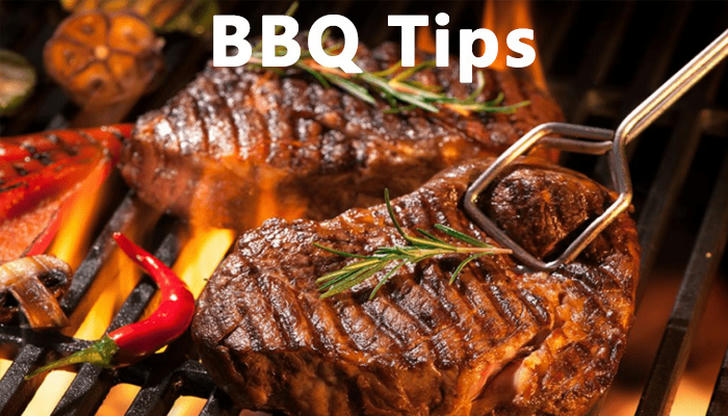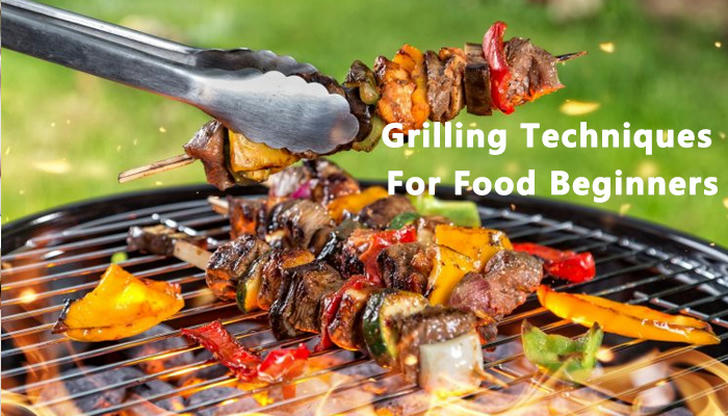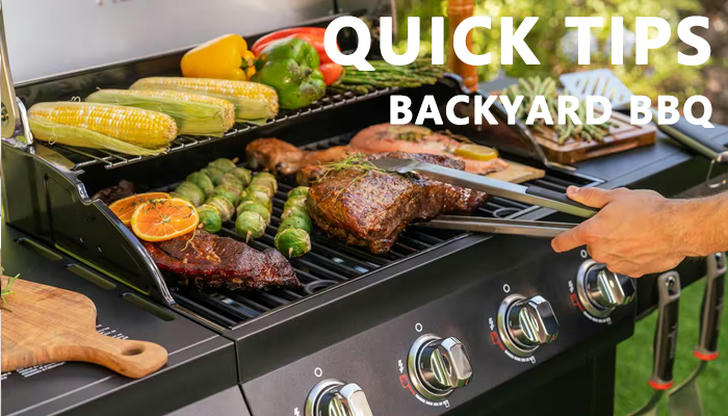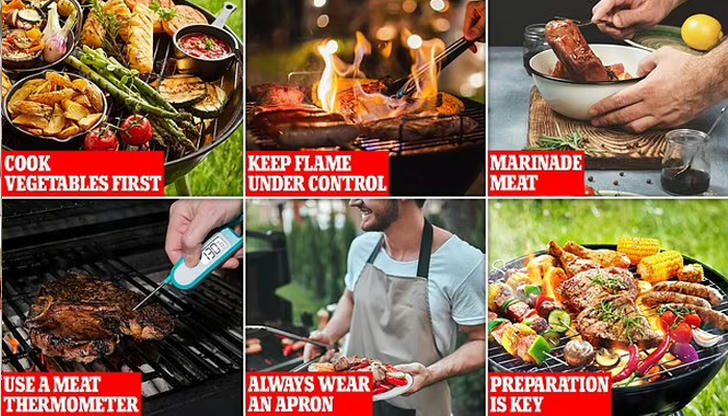Mastering the Grill: Tips & Tricks for Backyard BBQ Success Every Time

Grilling is more than just a cooking method; it's a way to bring friends and family together, enjoy the outdoors, and create memorable moments. Whether you're grilling in your backyard or hosting a neighborhood BBQ, the goal is the same: to serve delicious food that’s perfectly cooked every time. But grilling can be tricky for beginners and even seasoned grillers sometimes face challenges. This article provides essential tips and tricks to help you master your grill and achieve BBQ success, no matter your experience level. Let's dive into everything you need to know to grill like a pro.
1. Understanding Your Grill
Types of Grills
Before you fire up the grill, it's important to understand the different types of grills available:
Charcoal Grills: Charcoal is the classic choice for BBQ lovers. It imparts a smoky flavor that can't be replicated by gas grills. The heat is more difficult to control but gives you that authentic BBQ experience.
Gas Grills: Gas grills offer convenience and precise temperature control, making them ideal for beginners. They heat up quickly and can maintain a steady temperature, perfect for everything from steaks to vegetables.
Wood Pellet Grills: These combine the ease of a gas grill with the smoky flavor of charcoal. Pellet grills use wood pellets to generate heat, giving your food a rich, smoky flavor while maintaining the convenience of digital controls.
Choosing the Right Grill for Your Needs

When choosing a grill, consider:
Space: How much room do you have in your backyard?
Cooking style: Do you prefer high-heat grilling or slow-smoking?
Convenience: Do you want quick and easy (gas) or are you looking for that authentic smoky flavor (charcoal)?
Your grill should reflect your cooking needs and personal style, whether you're grilling for a few or hosting a big BBQ party.
2. Preparing for BBQ Success
Selecting the Right Meat
Choosing the right meat is key to a successful BBQ:
Beef: Steak, ribs, and burgers are BBQ classics.
Pork: Pork chops, pork belly, and pulled pork are all grill-friendly cuts.
Chicken: Thighs, wings, and whole chickens are perfect for grilling.
Seafood: Fish, shrimp, and shellfish grill up quickly and add variety to your BBQ spread.
Prepping Your Grill
Before cooking, ensure your grill is ready:
Clean the grates: Cleaning the grill grates before cooking helps prevent sticking and ensures even heat distribution.
Proper heat control: Grills should be preheated for about 10–15 minutes. Learn the difference between direct and indirect heat.
Two-zone fire: Set up your grill with two zones—one for direct high heat (for searing) and one for indirect heat (for slower cooking). This method gives you more control over your food.
3. Grilling Techniques for Perfect Results

Direct vs. Indirect Heat
Understanding how to use direct and indirect heat is crucial:
Direct heat: Use this method for foods that cook quickly, like steaks, burgers, or vegetables. Place your food directly over the flames for a nice sear.
Indirect heat: For larger cuts of meat that need slow cooking, like whole chickens or ribs, move the food away from the direct heat for a gentler cook.
Searing & Resting Meat
Searing: For that delicious caramelized crust, sear your meats over high heat for 1–2 minutes on each side.
Resting: After grilling, allow the meat to rest for 5–10 minutes. This step lets the juices redistribute, resulting in a more tender, juicy steak or chicken.
Grill Marks and Presentation
Grill marks: For perfect grill marks, rotate the food 90 degrees halfway through grilling on each side. This gives you those signature stripes that look great and indicate perfectly grilled food.
Turning meat properly: Avoid using a fork to turn your meat; use tongs to keep juices inside. Also, resist the urge to flip meat too often—let it cook for a few minutes on each side before turning.
4. Flavor Boosters: Marinades, Rubs, and Sauces
Marinades
Marinades are a fantastic way to add flavor and tenderness to meats. They typically consist of a mix of oil, vinegar or citrus, herbs, and spices.
- Best marinades: Use citrus-based marinades for chicken, balsamic for vegetables, or vinegar-based marinades for pork and beef.
Dry Rubs
Dry rubs enhance the flavor by creating a flavorful crust on your meat. They consist of a mix of salt, sugar, and spices.
- Crafting your own rub: A basic rub includes salt, brown sugar, paprika, garlic powder, and black pepper. Experiment with your favorite herbs and spices to make your signature rub.
BBQ Sauces
BBQ sauce adds that finishing touch:
Regional BBQ sauce styles: Kansas City is known for sweet, tomato-based sauce, while Texas BBQ sauce is typically tangy with a smoky kick. Carolina-style sauce is vinegar-based, while Memphis sauce often features mustard.
When to apply sauce: Apply sauce in the last 5–10 minutes of cooking to avoid burning it. Brush it on during the last few flips for an even layer.
5. Advanced Grilling Tips & Techniques

Smoking on the Grill
For an added layer of flavor, try smoking:
Wood chips or chunks: Add these to your charcoal grill or use a smoker box on your gas grill. Choose hickory, mesquite, or applewood for distinct flavors.
Turning your grill into a smoker: For low-and-slow smoking, set your grill to indirect heat, close the lid, and let the smoke do its magic.
Grilling Vegetables and Sides
Don’t forget the sides! Grilled vegetables can be a standout at any BBQ.
Grilled veggies: Try grilling corn, bell peppers, mushrooms, and zucchini for a smoky, caramelized flavor.
Grilled sides: Wrap potatoes, garlic, or even bread in foil and place them on the grill for a tasty side dish.
Maintaining the Perfect Temperature
A grill thermometer is a must-have for precision:
Thermometers: Always check your meat’s internal temperature before serving. For instance, chicken should reach 165°F, while steaks vary from 125°F for rare to 160°F for well-done.
Consistent heat: Learn to adjust your grill’s heat to maintain a consistent cooking temperature. This helps prevent overcooking and ensures even grilling.
6. Handling Common BBQ Mistakes

Avoiding Dry Meat
- Tips for juicy results: Rest your meat after cooking and check the internal temperature for accuracy. Overcooking is the number one cause of dry meat, so avoid cooking it past the ideal temperature.
Dealing with Flare-ups
- Managing grease fires: Flare-ups happen when fat drips onto the flames, but you can prevent them by moving food to the cooler side of the grill or using a spray bottle to control small flare-ups.
Overcooking and Under-seasoning
- Fixing under-seasoned dishes: If your BBQ lacks flavor, add more seasoning or sauces at the end of cooking. Don't be afraid to season heavily, especially if you're cooking large cuts of meat.
7. Serving & Presentation Tips
Serving Hot, Fresh BBQ
How to serve meat: Slice meats like brisket and pork against the grain to ensure tenderness.
Pairing BBQ with sides: Serve your grilled meats with fresh sides like coleslaw, cornbread, or grilled vegetables for a complete meal.
Setting Up Your BBQ Area
- Creating a comfortable BBQ setup: Ensure enough seating for your guests and set up lighting for evening BBQs. Adding string lights or candles creates a warm, inviting atmosphere for everyone to enjoy.
Conclusion
Mastering the art of grilling is all about patience, preparation, and a willingness to learn from each cookout. Whether you’re a beginner or an experienced griller, these tips and tricks will help you achieve consistent BBQ success every time. Remember, grilling isn’t just about cooking—it’s about bringing people together and enjoying good food and great company. With the right tools, techniques, and a little creativity, you'll be on your way to becoming the ultimate backyard BBQ master. Happy grilling!
